Certain Densities is showing at the George Caleb Bingham Gallery, University of Missouri from June 3 – August 19, 2013. features paintings by Matthew Ballou, Barry Gealt, David Gracie, Melanie Johnson, Ken Kewley, Rachael McHan, Rachael Pease, Emil Robinson, and Megan Schaffer.
Thoughts on Surface an essay by Natalie Shelly and Certain Densities, Uncertain Visions, Two Asides Regarding Perceptual Painting by Matthew Ballou are essays from the catalog to this show that were generously offered to readers of Painting Perceptions.
Thoughts on Surface
Abundance surrounds us. Food, housing, love, education; all of these things we quickly calculate when we reflect on the plentifulness of our lives and the way in which we meet our universal needs. While plenty is never as universal as we would like, the typical ways in which we categorize and quantify abundance do not have to place a limit on how we find and fully experience our world. Though our birthplaces, ages, and surroundings may differ, we all collectively share a world of color, light, and language and a tangibility of life through touch and experience. Life and the surfaces it presents to us become a way of knowing and a vehicle from which we build meaning.
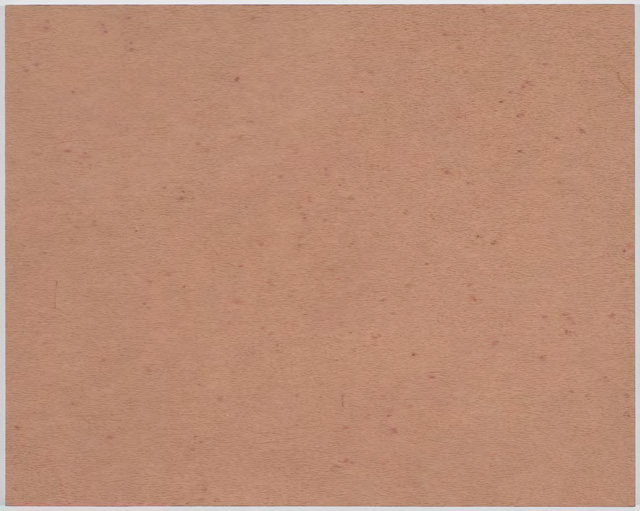
David Gracie untitled (skin) oil on panel 15.75 x 19.75 inches
Amazingly, touch remains the earliest sense we acquire and our original educator in constructing the knowledge of who we are and where we come from. We come to understand our world through the skin and surfaces we encounter. It is through this reaching to know and to perceive that we gain our reality – one that is gifted to us, not through immediacy or total comprehension at first, but instead one of wonderment that is woven by gradual acquisition. The soft warmth and pressure of skin, the cold shock of ice, and the tooth of stone – all of these surfaces teach us and we become their record keepers. This continuous collecting begins in the womb and never ceases.
Most often, our acts of recording go unnoticed and are done instinctively. Our fingertips, our eyes, and even tools we hold in our hands become receptors for feeling and learning the history held by a surface. This haptic mapping that we establish so early in life is built through an exchange with surface. It inspires in us a confidence, one that both classifies and demystifies. New places and objects call us back to what we have known, what we have touched, and what we recognize as being understood and familiar. Touch activates a reverie of return in each of us.
Surface can also excite imagination and help to reveal truths. Just as the beginning of a story can quietly introduce stage and character, surface, while uniquely descriptive, is just that – the surface, the start, the outside of things. This exterior forms a liminal edge, a transition between what is living or what is static and what lies beneath.
These thresholds we encounter in life are diverse and carry a beauty in their complexity and function. Skin holds and envelops tissue and bone to support our bodies, while the surface of paper, canvas, or clay can serve as an illusionistic plane from which artists may render a world and an experience. Each type of barrier is precious, fragile, and necessary. When studied, surfaces and the interiors they protect can illuminate what was once scientifically unknown or misunderstood by society. Yet, equally as important is the revelation and felt experience caused by a surface that holds the graceful stroke of a line or the layered translucency of color. Whether we are makers, explorers, or perceptual participants, it is the looking, touching, and recording of surface that can elicit moments that exist beyond the simple summarization of words. These moments, regardless of whether they dwell in the concrete or the mystical, are gracious in what they reveal to the self.
There is an abundance that surrounds us in this world. It is below our feet, wrapping our bodies, and constantly in grasp of our eyes and our hands. Surface, while general in what it may categorize, remains an offering of experience – a silent witness to origin, process, and potential.
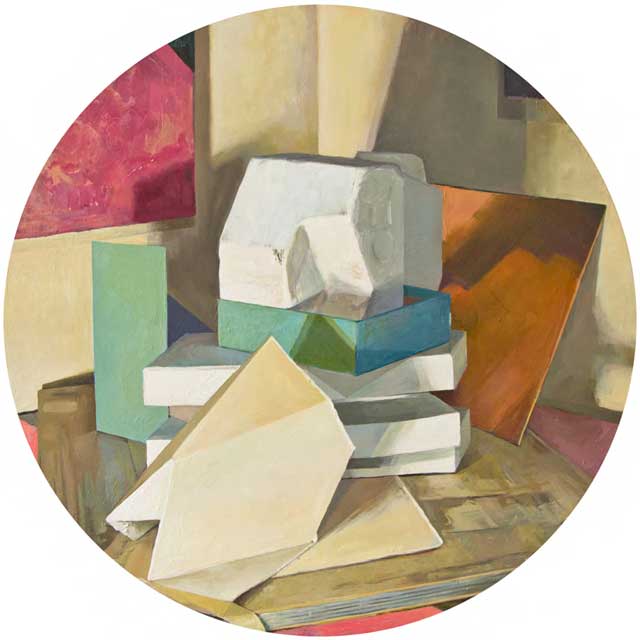
Matthew Ballou, Teachers, oil on panel, 24 inches in diameter
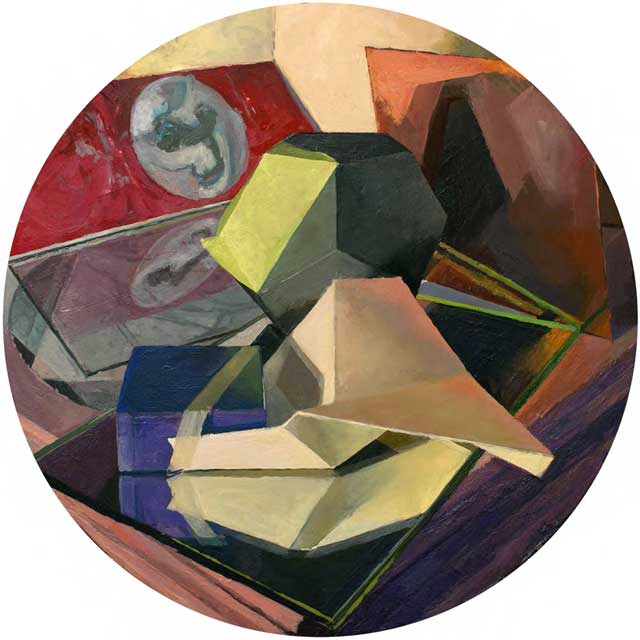
Matthew Ballou, Resonators, oil on panel, 14 inches in diameter
Certain Densities, Uncertain Visions – Two Asides Regarding Perceptual Painting
“Appearances reach us through the eye, and the eye—whether we speak with the psychologist or the embryologist—is part of the brain and therefore inextricably involved in mysterious cerebral operations. Thus nature presents every generation … with a unique and unrepeated facet of appearance. The encroaching archaism of old photographs is only the latest instance of an endless succession in which every new mode of natural representation eventually resigns its claim to co-identity with natural appearance. And if appearances are thus unstable in the human eye, their representation in art is not a matter of mechanical reproduction but of progressive revelation.” – Leo Steinberg
Although quite varied in manner and approach, a number of the works in this exhibition evidence a determined sensitivity to the painted surface as an aesthetic and formal reality. This embrace of surface is necessary, as all paintings come down to the particular arrangement of pigments on a (usually) two-dimensional plane. Painted surfaces are always progressively revealed; they always manifest over some period of time and through some process of engagement. Surface could be defined as a zone of incidence where nuanced sight and kinesthetic touch come together. The artist’s apprehension of space, light, form, and movement presents itself as a haptic environment in the painted object. This arena is of huge significance to perceptually-minded painters.
Creating an illusion of things is of only partial importance when it comes to the fact of the painted surface. Subjectivity, shifting focus, and temporality are also vital as indicators of life, sensation, and thought in the artwork. These ephemeral aspects of creative effort become embedded, and they shape the painting’s meaning just as surely as any material or formal fact might. Therefore the densities of this exhibition’s title refer not only to paint but also to lived experience.
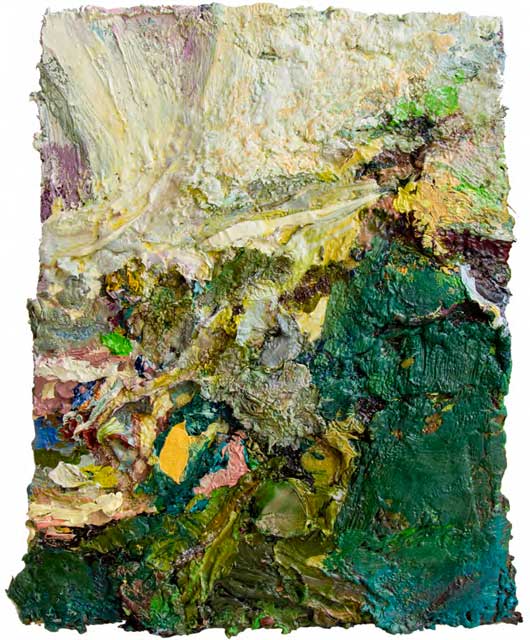
Barry Gealt, Waterfall II, oil on panel, 12 x 9.75 inches
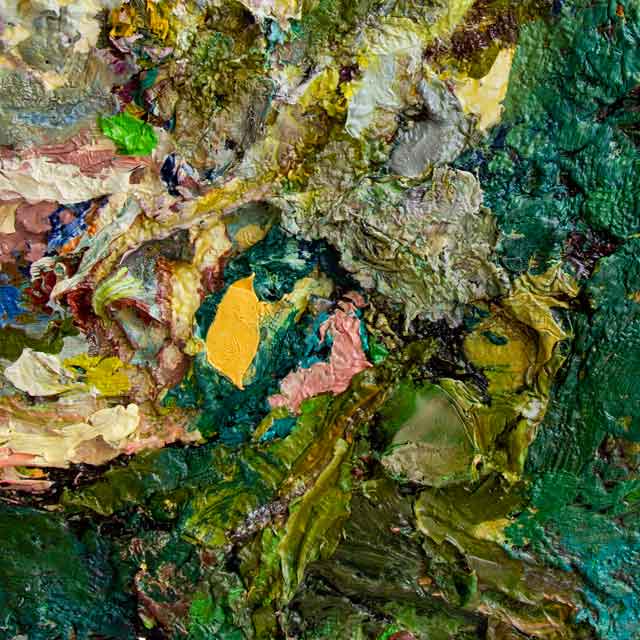
Barry Gealt, Detail – Waterfall II
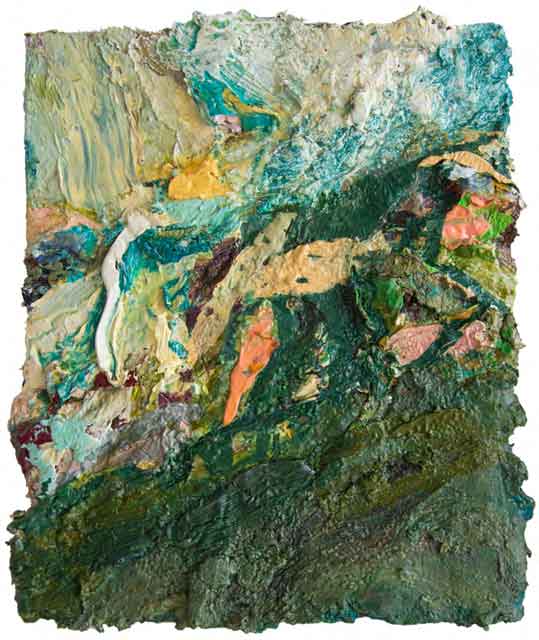
Barry Gealt, Waterfall III, oil on panel, 12 x 9.75 inches
The densities these surfaces support are certain in the sense that they are resolutely made. However, they are also certain in that they are particular and specifically sought-out. These surfaces are a realm of peculiar notations drawn together to form a united structure combining sight, touch, and contemplation in an evocative way. This rich atmosphere is a unique aspect of what art has always offered makers and viewers. The works live as artifacts of experience, as discursive objects that both reveal and conceal their own making. Thus, the paintings are not meant to function as closed events. Instead, they are participatory and relational. Their surfaces offer an exchange with the audience that inspires reciprocity and active viewing.
“When the limits of the depictable in nature suddenly recede before the searching gaze, when earlier works come to seem inadequately representative of truth, then the artist’s power multiplies… Every picture is to some degree a value judgment, since you cannot represent a thing without proclaiming it worthwhile… But natural fact can be purely apprehended only where the human mind has first endowed it with the status of reality. Only then is the act of seeing backed by a passion…”
– Leo Steinberg
A perceptual approach to painting is not synonymous with rote observation. Perception is a harrowing experience, fraught with lightning-strike insight and rabbit-hole tunnel vision. Perceptualists recognize that their sight is subjective, the result of influence and pressure, and extremely sensitive to suggestion and conceit. They know that building a picture from their own shifting apprehension of the environment around them is not a linear matter. The most banal thing may become charged with transcendence through a concerted effort of contemplation. Likewise, the most sacred object may be reduced to the realm of prosaic commonality via determined focus on other concerns. In each instance a keen awareness of sight may be obtained without limiting the painting to an exercise that terminates in simply achieving an image. Perception is more than the act of seeing, just as listening is more than the act of hearing. Perceptual painters are aiming to experience more – and present more in their work – than seeing and translating sight, no matter how honorable an end that may be. Verisimilitude is only one aspect of representational art. Other aims may take precedence in any particular painting.
Achieving a distinctively felt sense of the seen in a work may actually involve the most rigorous abstraction, the most intense formal play. Indeed, it requires artists to go far beyond just transferring identifiable things (objects, landscapes, people) from the three-dimensional realm into the two-dimensional realm. This is because representation often involves counterintuitive understandings of time and awareness, proportion and relationships, memory and history, among many other factors. Representation is an accumulation of such multiplicities. A representational picture will not always look representational, but it will always communicate beyond appearances.

Ken Kewley- To the studio, acrylic on Paper Mounted on Panel, 8 x 8 inches
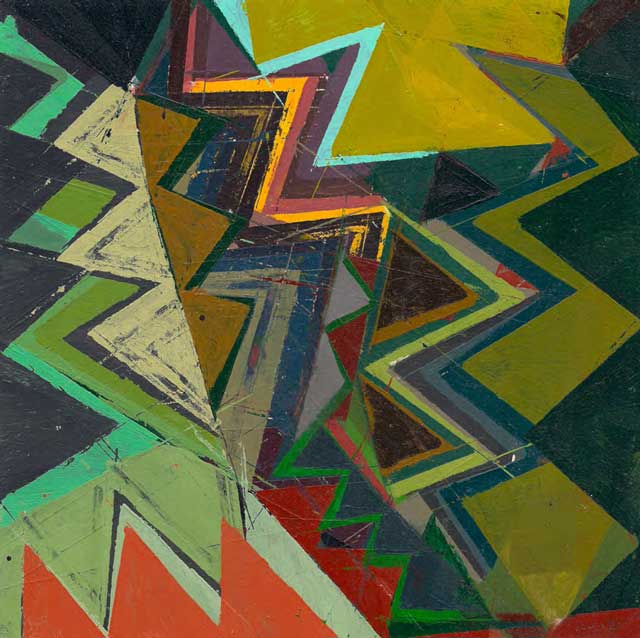
Ken Kewley- Side Yard, acrylic on Paper Mounted on Panel, 8 x 8 inches
To arrive at a picture that embodies representation artists may have to forgo depictive, clear tropes in favor of the kind of digressions that so often permeate our sensations. The visual dynamics of sight are far more complex than simple transcription of accurate features, textures or shapes. They are the result of complex neurobiology and social conventions interacting with the idiosyncratic ways each of us has learned to see. How viewers comprehend a picture is intimately connected to the previous experiences of sight they have had, how they have interpreted those past experiences, and what vast range of factors (physical, emotional, cultural, religious, etc.) have influenced those experiences. The perceptual painter, incredibly, attempts to build pictures with all of these various elements in play. That is why Cezanne’s apples are not just apples and why Heidegger and Meyer Schapiro can argue about Van Gogh’s boots. An artist concerned with channeling being-ness and experience will never settle for illustrative mimesis. With great honor for appearances, the perceptualist reaches beyond them.
So it is that many of the images you find in this exhibition are cumulative estimations exploring potential states of experience rather than final products of confident certainty. Perceptual painting rests on a constructed visual logic that has little to do with direct visual facts. It incorporates tangential awareness into the acts of apprehension, asking much of both the artist and the viewer. When you look at the paintings, see beyond appearances into the subjective realms these artists have created. In paying attention to what others have contemplated, we participate in something far deeper and more intimately human than mere imitation could ever provide. Mine your own personal history of sight and trade literal, certain readings for evocative and relational ones. Perhaps you will perceive the reveries these artists have felt, grasp the “progressive revelation” they have suggested, and notice the poetic understanding embedded in your own alchemical vision.
These things are, after all, part of what paintings were always meant to do.
“The aesthetic is the making formal of epiphany. There is a ‘shining through’.
– George Steiner
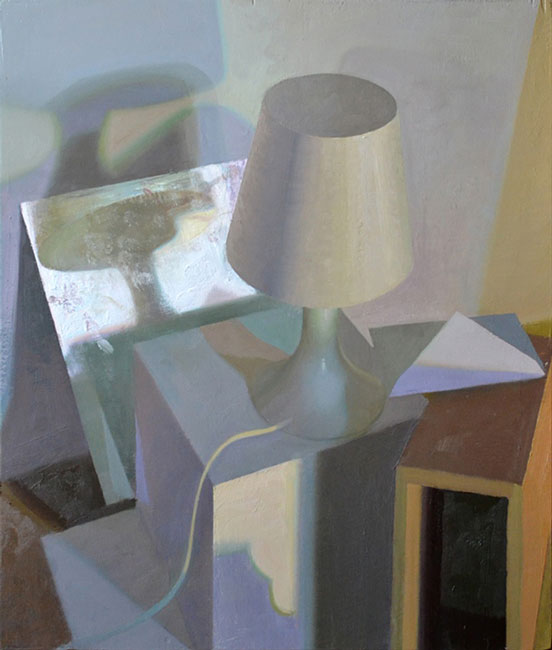
Emil Robinson- Mirror Life, oil on Panel, 22 x 18 inches (note: the linked larger view is a detail)
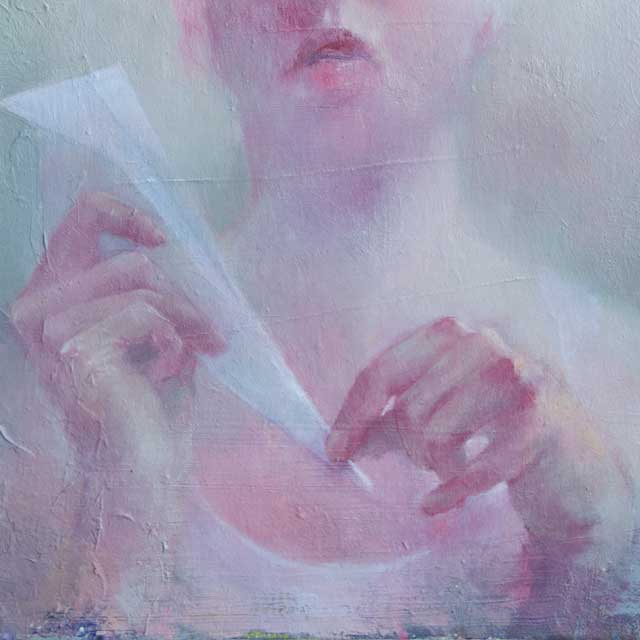
Melanie Johnson, Paper Planes,(detail) oil and acrylic on linen, 20 x 16 inches

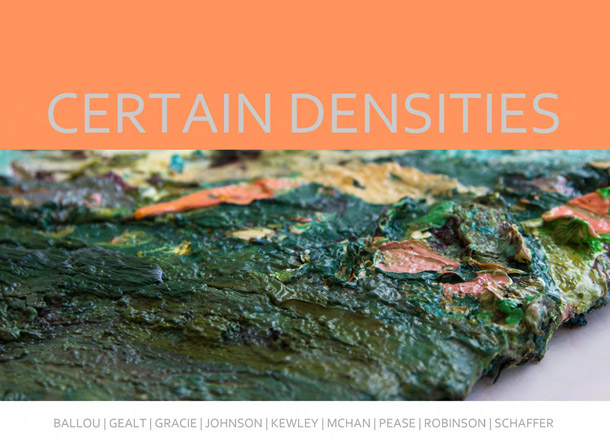




Interesting thoughts.
This looks like a super show. Way too far away for me to get there, but I appreciate your acquainting me with this work, I always love to find artists new to me.
Looks like a great show…wish I could see these in person. The second essay was very concise and well said